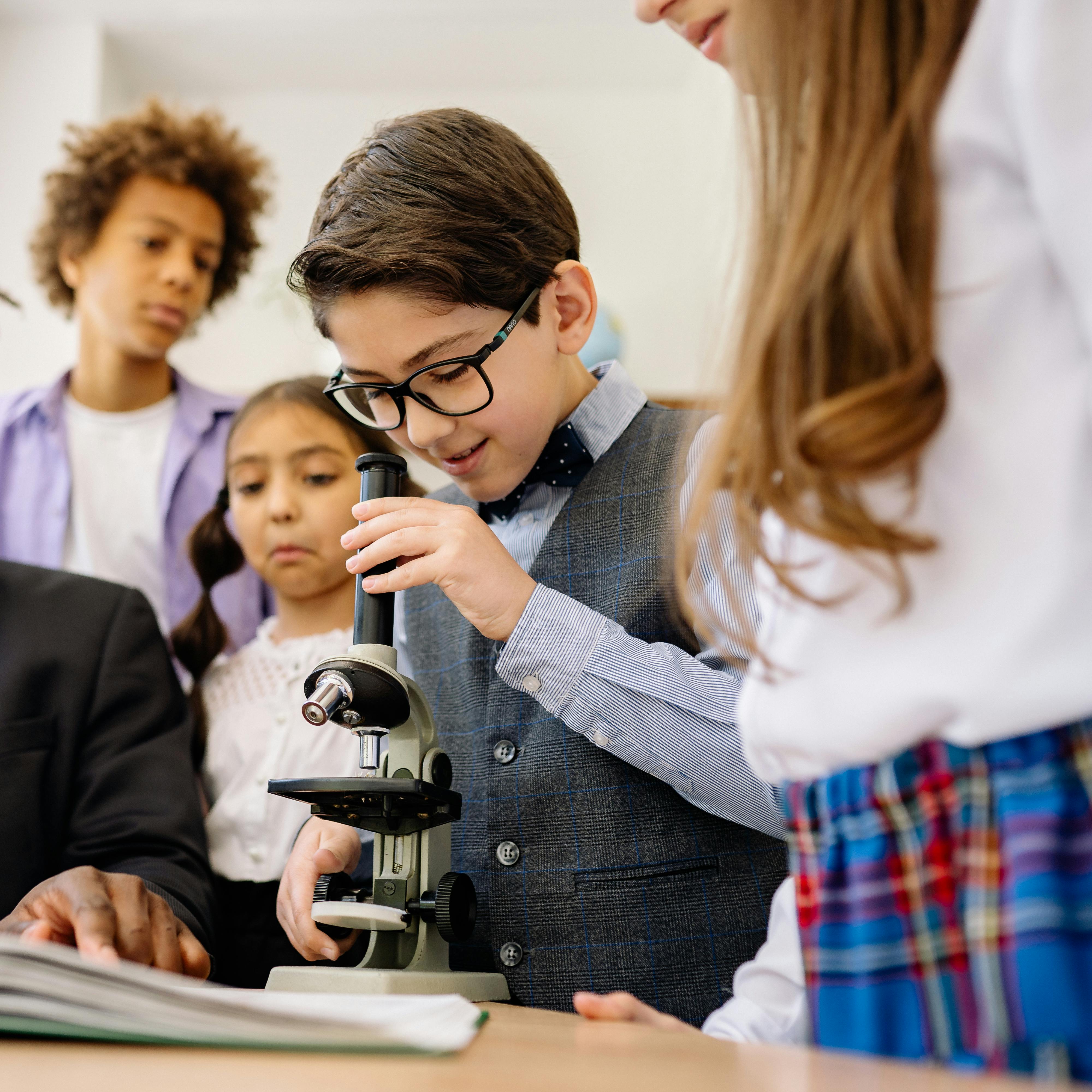Makerspaces are dedicated spaces with creative materials and technology for teaching STEM and Maker Ed, which offer an engaging way to meet students where their interests lie. With a Makerspace, you can help engage your students by giving them options to show what they know and practice real-life skills and concepts.
Makerspaces offer purposeful teaching and many tangible benefits for students, including developing creativity, critical thinking, problem-solving, innovation, and collaboration skills—opportunities to explore, design, experiment, and build foster self-confidence and discovery.
Different Types of Makerspaces for Teaching STEM
Makerspaces take all different forms, shapes, and sizes. What works for one classroom or school may not be ideal for another. It’s important to think about your school culture and what you have access to, the support you will receive in building and nurturing your Makerspace, and the technology available to you and your students.
When deciding what type of Makerspace you want to create, consider the following options:
High-tech Makerspace — In high-tech Makerspaces, typically in high schools and universities, you will often find 3D printers and scanners, laser cutters, CNC machines, embroidery machines, power tools, and video game consoles.
Low-tech Makerspaces — Low-tech Makerspaces will have amazing supplies like markers, paint, fabric, cardboard, Wondrbolt Connectors, LEGO® blocks, Squishy Circuits, and hand tools. At WhyMaker, we recommend starting out with a low-tech Makerspace. Any opportunity kids have to do substantial, hands-on creating is a valuable learning experience. As the Makerspace leader feels more comfortable with the art and skills of making, add one high-tech tool at a time, for a specific purpose.
Makerspace or Maker Storage — Do you want your Makerspace to be a place where teachers bring their students to work, or a place where teachers or students take materials and tools to work somewhere else? Locations and space in schools are always a challenge. There are so many options for building areas for maker learning in your school. If there is a large room or a section of the library where students have space to work, then organize that area with students working in mind. If there is no additional or repurposable space, then having Maker storage could work. Maker storage could be on a cart or in a closet. It is important to think of the logistics of this storage space, such as who is going to “own” it, support teachers and students, reorder supplies, etc.
Remote — Research has shown the benefits of engaging kids and their caregivers to help young distance learners build STEM skills. For students working on their projects at home, they can use objects they have around the house, such as cardboard, tape, scissors, foil, and straws. For students without access to materials, ask your school to arrange a pickup day with packets of supplies for students to collect. Students can then complete project research and design at home, followed by construction and collaboration at school or through socially distanced Makerspace activities, where each team member builds a part of the project that is assembled later.
Makerspace Documenting & Safety Tips
Get all the adults involved to understand the goals of what students are doing and to ensure that safety protocols are followed.
To show their work, students should record their progress with pictures and/or video and write up the process (great for writing skills) with results, challenges, successes, plus surprises along the way.
Teachers should review each step, ask questions, and provide suggestions.
Teachers and librarians have used Google Slides and class LMSs with links to websites and video tutorials on a variety of technologies, safety, and skills. Some examples are the 4 tips to create a virtual makerspace, and from Mimio Educator. Explore our Robotics for Virtual Learning, which provides help with remote learning strategies.
Examples of School Makerspaces
Makerspaces are also ideal for any school type—from elementary school to middle school to high school. Check out the examples below of Makerspaces from around the country.
Elementary School Makerspaces
Ocean City Primary School in Ocean City, NJ — Read how the school's third-grade students designed a LEGO-Themed Makerspace, got the budget for it, and then built it!
Lee Elementary School in Los Alamitos, CA — Check out how student inquiry takes center stage at Lee's Makerspace, where children learn and explore through engineering challenges and design thinking.
Middle School Makerspaces
Hillsdale Middle School in El Cajon, CA — Learn about their Schoolwide Makerspace where they focus on fully preparing students for the world of work and what they will do once school is over.
High School Makerspaces
Mt. Olive High School in Flanders, NJ — Explore Mount Olive High School's Makerspace and how their makerspace helped create more than 15,000 protective visors for use by medical personnel in New Jersey and New York!
Palisades Charter High School in Los Angeles, CA — Check out their Facebook page with photos and videos of how they “MAKE, life-hack, experiment, invent!”
Getting Started with a Makerspace
Maker Education ignites students’ personal passions, builds their social and emotional competencies and inspires them to be purposefully creative. Makerspaces increase engagement and student outcomes, as well as student equity. Don’t wait to get started! For a full list of what to buy for your Makerspace, check out our Guide to Create an Exciting Makerspace for Teaching STEM.
If you need assistance getting started with your Makerspace, WhyMaker can help with professional development to get teachers up to speed. Contact us!







